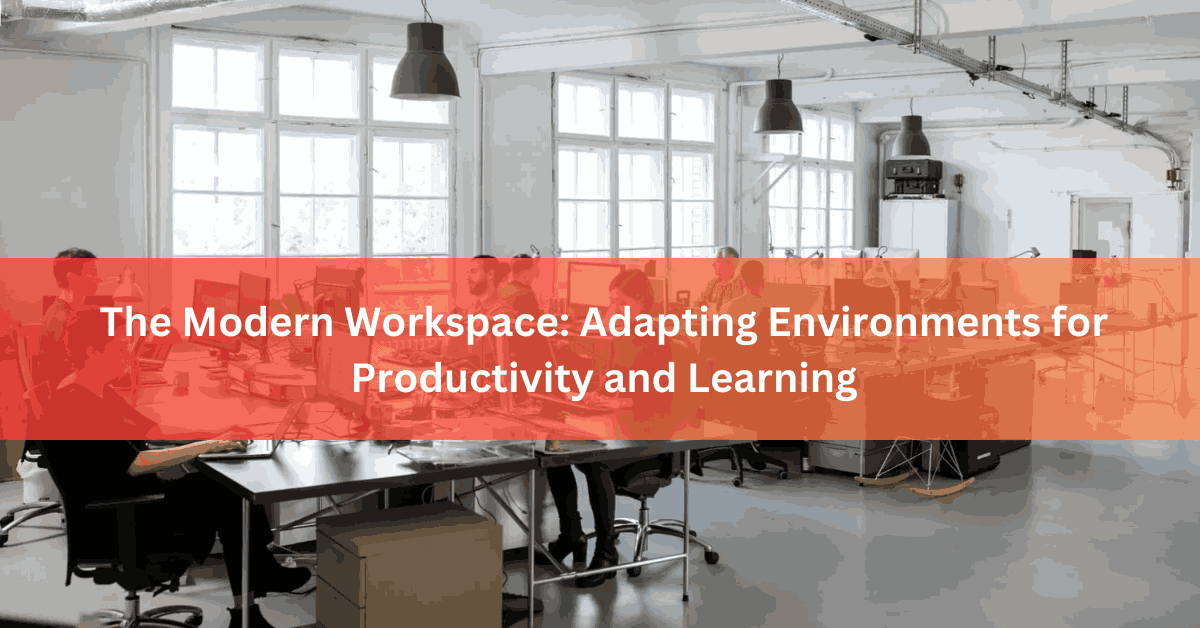The Modern Workspace: Adapting Environments for Productivity and Learning
The workspace concept has significantly transformed with rapid technological advancement and changing educational paradigms. Modern workspaces, such as those inspired by designs like Luxor workspaces, are no longer just physical locations where tasks are performed.
Instead, they have evolved into dynamic environments that foster creativity, collaboration, and continuous learning. These spaces are designed with a deep understanding of the needs of today’s workforce and students, integrating flexibility, digital technology, and ergonomic principles to enhance productivity and facilitate learning.
The modern workspace reflects the shift towards more interactive and adaptive work and educational practices, embodying contemporary design principles to create environments that are functional and conducive to innovation and personal growth.
The Evolution of Workspaces
The journey of workspaces from static offices to vibrant educational settings encapsulates a broader transformation in how society views work and learning. Historically, offices were designed with efficiency in mind, focusing on individual tasks and minimal interaction.
However, as collaborative work and interdisciplinary learning became more valued, the design of these spaces evolved to accommodate group activities, open communication, and flexibility. This shift mirrors changes in educational settings, where traditional classrooms have transformed into interactive learning hubs equipped with technology and designed to support a variety of learning experiences.
The transition reflects a holistic approach to design, where spaces are created to help the multifaceted nature of work and education in the 21st century, emphasizing the importance of adaptability and engagement in fostering effective learning and productivity.
Crafting Spaces That Foster Focus and Efficiency
In the modern workspace, ergonomics, and design are intertwined, crucial in creating environments that enhance focus and efficiency. The ergonomic design focuses on understanding human anatomy and psychology to create physically comfortable and mentally stimulating spaces.
This includes adjusting furniture to accommodate different body types, strategic lighting to reduce eye strain, and layouts that promote easy movement and interaction. These elements minimize discomfort and distraction, enhancing productivity and engagement.
Designing with ergonomics in mind ensures that workspaces are not just places where tasks are completed but environments that support the overall well-being of individuals, making them more conducive to sustained focus and efficient work.
Active Learning and Work
Furniture plays a pivotal role in the modern workspace, transcending its traditional functions to become a critical factor in promoting active learning and work. The selection and arrangement of furniture can dynamically influence how individuals interact with the space and each other.
For instance, modular furniture and movable seating encourage a flexible approach to learning and working, allowing spaces to be easily reconfigured for different activities and group sizes. Standing desks and adjustable chairs support various postures, catering to physical comfort and health.
Through thoughtful furniture design, workspaces can become adaptable environments that encourage active engagement, collaboration, and creativity, directly contributing to the effectiveness of learning and work processes.
Balancing Aesthetics and Functionality
A balance between aesthetics and functionality is essential in designing contemporary work and study areas. This balance is about creating spaces that meet practical needs and inspire and motivate.
Aesthetics significantly influence mood and creativity, with elements such as natural light, plants, art, and color schemes contributing to an atmosphere that stimulates mental engagement.
At the same time, functionality ensures that the space efficiently supports the tasks at hand, with technology integration, storage solutions, and flexible layouts facilitating work and learning.
The challenge lies in designing beautiful and practical environments, which requires a deep understanding of the users’ needs and the activities the space intends to support.
By striking this balance, modern workspaces can enhance productivity and learning while also being places where individuals feel comfortable and inspired.
Enhanced Collaboration and Learning
A critical element in the evolution of modern workspaces, especially those inspired by forward-thinking designs like Luxor workspaces, is the seamless integration of technology. This goes beyond merely providing access to computers and the internet.
It involves embedding digital tools and platforms throughout the environment to enhance collaboration, learning, and productivity. Interactive whiteboards, video conferencing systems, and cloud-based collaboration platforms are a few technologies that have become integral to modern work and educational spaces.
These technologies facilitate real-time communication and collaboration within the physical workspace and with peers and colleagues worldwide. By integrating advanced technological tools, modern workspaces can break geographical barriers, fostering a global community of learners and professionals.
This approach ensures that workspaces are equipped to handle the demands of today’s digital world and are prepared to adapt to future technological advancements, making them genuinely future-ready environments that support ongoing collaboration and learning.
Conclusion
In conclusion, transforming the modern workspace into environments that support productivity and learning is a testament to the evolution of work and educational philosophies. Inspired by innovative designs like Luxor workspaces, these environments are tailored to meet the complex needs of today’s workers and learners.
They embody the integration of flexibility, technology, ergonomic design, and a balance between aesthetics and functionality. As society continues to evolve, so too will the concept of the workspace, reflecting changes in how work and learning are approached.
The future of workspaces lies in their ability to adapt to these changes, creating environments that not only facilitate tasks but also foster personal growth, creativity, and collaboration. Through thoughtful design and an understanding of human needs, modern workspaces will continue to be at the forefront of supporting the dynamic landscape of work and education.




